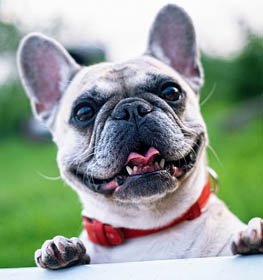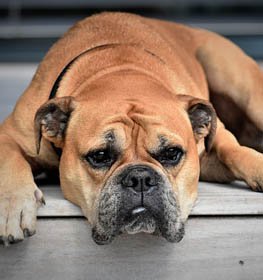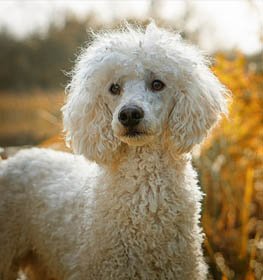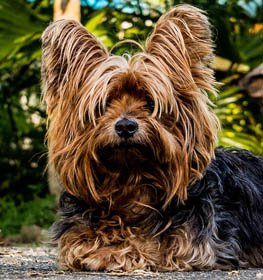Indian Spitz (Greater) Information & Dog Breed Facts
Collection of all the general dog breed info about Indian Spitz (Greater) so you can get to know the breed more.
| Group | Companion Dogs |
|---|---|
| Popularity Rank | 403 |
| Reviews | 2 |
| User Ratings | |
|
Compare the Indian Spitz (Greater) With Other Dogs
Select at least one dog breed to make the comparsion. | |
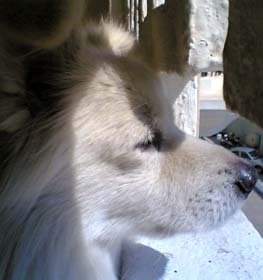 | |
| Origin | |
|
Common Names & Aliases
What other names is an Indian Spitz (Greater) known by? Discover all traditional, regional and informal names used for this breed. | Greater Indian Spitz |
|---|---|
|
Breed Classification
What type of dog breed is an Indian Spitz (Greater)? Learn about its genetic classification and breeding category. | Purebred |
|
Size Classification
What size category is an Indian Spitz (Greater)? Learn how big the Indian Spitz (Greater) breed typically grows. | Medium |
|---|---|
|
Weight Statistics
How much does an Indian Spitz (Greater) weigh? Discover typical weight ranges for adult males and females of the Indian Spitz (Greater) breed. | 26–44 pounds (12–20 kg) |
|
Average Weight
What is the average weight of an Indian Spitz (Greater)? | 35 pounds (16 kg) |
|
Height
How tall is the Indian Spitz (Greater)? Indian Spitz (Greater) height: | 14–18 inches (35–45 cm) |
|
Average Height
What is the average height of an Indian Spitz (Greater)? | 16 inches (40 cm) |
|
Price Range
How much does an Indian Spitz (Greater) puppy cost? Find current market prices and factors affecting Indian Spitz (Greater) costs. | Unknown Unfortunately, we couldn't find the price of the Indian Spitz (Greater). If you have a Indian Spitz (Greater) for sale, please advertise it on a reliable website to make sure the Indian Spitz (Greater) gets to a happy place. |
|---|---|
|
Availability
How easy is it to get a Indian Spitz (Greater)? How many Indian Spitz (Greater) are there in the world? | Average: The Indian Spitz (Greater) is a commonly available dog breed. There is less risk of overbreeding compared to the very popular dogs. Of course, they may be more popular in some countries, and inbreeding may occur, so be careful. |
|
Intelligence Rating
How intelligent is an Indian Spitz (Greater)? Discover the Indian Spitz (Greater)'s intelligence ranking and learning capabilities. | Very smart: Indian Spitz (Greater) is an excellent dog breed. You can teach them many tricks and commands. The limit is your creativity. They understand and memorize new commands in 5-15 repetitions. This breed obeys the first command 85% of the time or better.
The Indian Spitz (Greater) is one of the top breeds in the dog intelligence ranking. |
|---|---|
|
Training Difficulty
How easy is it to train an Indian Spitz (Greater)? Learn about the Indian Spitz (Greater)'s trainability and response to training methods. | Indian Spitz (Greater) dogs are very easy to train. They easily find out the association between commands and actions. |
|
Watchdog Rating
How good is an Indian Spitz (Greater) as a watchdog? Learn about the Indian Spitz (Greater)'s alertness and guarding instincts. | Indian Spitz (Greater) dogs are one of the best watchdogs. Their main job is to observe and they're very consistent in their effort. The best vocal cords and sense of hearing belong to them. Usually, they're very territorial and protective about their property, so the Indian Spitz (Greater) dogs will alert you if they sense something different. |
|
Territorial Protection
Is an Indian Spitz (Greater) protective of its territory? Learn about the Indian Spitz (Greater)'s guarding instincts and behavior. | Indian Spitz (Greater) dogs are average defenders. Some dogs are very protective of their territory, while others easily let a stranger to trespass. This breed is not sure to defend its territory in every situation. |
|
Personality Traits
What personality does an Indian Spitz (Greater) have? Learn about characteristic Indian Spitz (Greater) temperament and behavior traits. | ActivePlayfulIntelligentLoyalKindAthleticCommunicative |
|---|---|
|
Sensitivity Level
How sensitive are they? Indian Spitz (Greater) sensitivity: | Indian Spitz (Greater) dogs have an average emotional level and are not the most sensitive dog breed. Sometimes it's okay to change the daily routine, have guests and listen to loud music.
Some dogs handle moderate punishment very well, while others crumble apart at a dirty look. This breed is not affected emotionally by moderate punishment. |
|
Affection Level
How affectionate are they? Is an Indian Spitz (Greater) a good family dog? | Average: Indian Spitz (Greater) dogs are average dogs regarding their affection level. Some breeds are forthcoming and friendly, while others are independent and don't bond too closely with their owners. |
|
Social Needs
How much social interaction does the Greater Indian Spitz need? Indian Spitz (Greater) social needs: | Indian Spitz (Greater) dogs are a social breed. They enjoy being around people or other animals. This breed doesn't tolerate being left alone. |
|
Impulse to Wander or Roam
How likely is the Indian Spitz (Greater) to run away? Does this breed explore or wander a lot? Does Indian Spitz (Greater) roam? | Indian Spitz (Greater) dogs tend to escape less than other breeds. They have low to average wanderlust potential. Exploring the world is not the best activity they can imagine. |
|
Prey Drive
Do this canine have a strong prey drive? Does Indian Spitz (Greater) have high prey drive? | Indian Spitz (Greater) dogs have a higher impulse to chase and catch something than other dog breeds. Cats or any other small animals might be in danger. It's a natural instinct, doesn't necessarily mean that Indian Spitz (Greater) dogs are aggressive. Better to keep this breed on a leash. |
|
Barking Frequency
Does an Indian Spitz (Greater) bark a lot? Learn about typical Indian Spitz (Greater) vocalization patterns and triggers. | A lot: Indian Spitz (Greater) is a particularly loud breed. They often enjoy barking and howling loudly. If you want a quiet dog, not the best choice.
The main triggers for barking are fear, attention, alarm, boredom, greeting, separation anxiety, compulsive barking, and defense. |
|---|---|
|
Playful Nature
How playful is an Indian Spitz (Greater)? Understand the typical play drive and energy level of the Indian Spitz (Greater) breed. | The Indian Spitz (Greater) is a highly playful breed. Excited barking and sometimes nipping will alert you to play. |
|
Apartment Adaptability
Can an Indian Spitz (Greater) live in an apartment? Learn about the Indian Spitz (Greater)'s suitability for apartment living. | Very house-friendly dog the Indian Spitz (Greater) breed. It's good if you have a small garden where he can go out and do his business, but it's not important at all. You can get enough exercise with one or two walks a day, so keeping them indoors shouldn't be a problem. |
|
Lifestyle Adaptability
How adaptable is an Indian Spitz (Greater) to lifestyle changes? Learn about the Indian Spitz (Greater)'s flexibility to new situations. | Indian Spitz (Greater) dogs adapt very well to lifestyle changes and basically all living environments. They don't mind moving from one place to another with their owner. |
|---|---|
|
Alone Time Tolerance
Can an Indian Spitz (Greater) be left alone? Learn about the Indian Spitz (Greater)'s tolerance to solitude. | Indian Spitz (Greater) dogs do best when a family member is at home during the day or if their workplace is dog-friendly so they can take the dog at work. |
|
Bite Risk Assessment
What is an Indian Spitz (Greater) biting potential? Learn about the Indian Spitz (Greater)'s bite risk factors. | Low 🔽 The Indian Spitz (Greater) has a low chance of biting somebody. Top reasons for dog bite: protection, pain, excitement, herding instinct, being provoked. (Data based on the available online bite statistics.) |
|---|---|
|
Mouthing Tendency
Is an Indian Spitz (Greater) mouthy? Learn about the Indian Spitz (Greater)'s tendency to use mouth during play. | Indian Spitz (Greater) dogs have an average tendency to nip, chew, playbite, or herd people. It's a common habit during puppyhood, not aggressive behavior. These "bites" don't hurt, but Indian Spitz (Greater) dogs need to be taught a good attitude. |
|
Bite Strength Rating
How strong is an Indian Spitz (Greater) bite? Learn about the Indian Spitz (Greater)'s bite force measured in PSI. | Between 200 and 400 PSI ⏺ Indian Spitz (Greater) bite force: Ordinary. Bite force Indian Spitz (Greater) measurements typically fall within the range of 200 to 400 PSI. The bite force of an Indian Spitz (Greater) is considered ordinary when compared to other dog breeds, but it is still quite powerful. This Indian Spitz (Greater) bite force PSI can cause bite wounds. Indian Spitz (Greater) bite PSI is not something that should be feared if the dog is well-trained and managed. To avoid any issues, it's essential to learn how to train an Indian Spitz (Greater) puppy not to bite from an early age.
The Indian Spitz (Greater), and many others, have a fearsome presence because they have significant jaw strength, so it is important not to anger the dog and have it around strangers until it is fully trained. However, they are usually quite calm and good companions, they work well in families and are easy to care for. In conclusion, while the Indian Spitz (Greater) bite force is certainly an interesting aspect of the breed, it is important not to let it overshadow the many other reasons why these dogs are so loved and respected. With proper training and socialization, an Indian Spitz (Greater) can be a loyal and protective companion for your family. |
|
Average Lifespan
How long does an Indian Spitz (Greater) live? Learn about the typical lifespan of the Indian Spitz (Greater) breed. | 13-15 years The average lifespan of Indian Spitz (Greater): 14 years |
|---|---|
|
Climate Tolerance
How well does an Indian Spitz (Greater) handle different weather? Learn about the Indian Spitz (Greater)'s climate adaptability. | Tolerates warm and cold weather Dogs that tolerate hot and cold weather are typically those that have a double coat of fur. Dogs with a double coat of fur have a layer of fur that insulates their skin and helps protect them from the cold and the heat. |
|
Health Concerns
What health issues are common in an Indian Spitz (Greater)? Discover typical conditions affecting the Indian Spitz (Greater) breed. | Indian Spitz (Greater)s are commonly healthy dogs. Vet costs aren't expensive with this breed. |
|
Vet Care Frequency
How often does an Indian Spitz (Greater) need vet visits? Learn about the Indian Spitz (Greater)'s veterinary care requirements. | Rare The Indian Spitz (Greater) should have a complete physical check-up at least every 12-18 months (but preferably once per year). If your dog shows any symptoms, call your veterinarian. |
|
Energy Rating
How energetic is an Indian Spitz (Greater)? Understand daily activity needs of the Indian Spitz (Greater) breed. | Indian Spitz (Greater) dogs have a lower energy level than other dogs. If you live a chilled life, this breed can be a good choice for you. |
|---|---|
|
Activity Requirement / Exercise Need
How much exercise does an Indian Spitz (Greater) need? How much exercise do Indian Spitz (Greater) dogs require per day?
Do Indian Spitz (Greater) dogs need a lot of exercises? | Indian Spitz (Greater) dogs exercise need is minimal. If you live a slow life, this breed can be a good choice for you. |
|
Sleeping Need
How much sleep does the Indian Spitz (Greater) breed need? | Indian Spitz (Greater) dogs like sleeping so they do sleep a lot. They're not the most active dog breed. If you live an active life, this breed can be a bad choice for you. |
|
Obesity Tendency
Is an Indian Spitz (Greater) prone to weight gain? Learn about the Indian Spitz (Greater)'s obesity risks. | Low: The Indian Spitz (Greater) has good luck with genetics. This breed doesn't need to worry about obesity. To make your dog happy and fit, feed him with quality dry dog food and live an active life together. Try to find the happy medium between exercise and feeding.
If you notice any weight gain, consult your veterinarian and make a diet plan. Reduce unhealthy food and snacks, and measure the Indian Spitz (Greater) weight regularly. |
|---|---|
|
Food Consumption
How much food does an Indian Spitz (Greater) need daily? Learn about the Indian Spitz (Greater)'s feeding requirements. | 1.5 to 2.5 cups of high-quality dry food a day, divided into two meals. |
|
Allergy Friendliness
Is an Indian Spitz (Greater) hypoallergenic? Learn about the Indian Spitz (Greater)'s suitability for allergy sufferers. | No Indian Spitz (Greater) dogs don't do well with allergy sufferers by causing allergic reactions. Some dog breeds are even considered to higher possibility of an allergic response. Coat type isn't necessarily relevant, because most people are allergic to dander (flakes on the dog's skin) or saliva, not actually to dog hair. |
|---|---|
|
Coat Colors
What colors does an Indian Spitz (Greater) come in? Discover all possible Indian Spitz (Greater) color variations. | White Brown Black & White |
|
Grooming Requirements
How much grooming does an Indian Spitz (Greater) need? Learn about Indian Spitz (Greater) coat maintenance requirements. | Average: The Indian Spitz (Greater) requires average grooming effort. Cutting the dog's hair by a professional groomer isn't essential. Brushing the dog's coat is useful to reduce shedding. Ears and eyes should be cleaned regularly to avoid infections. Don't skip the seasonal flea treatment too. Dog nail trimming and dog bath can be helpful sometimes. Check the local pet store for dog grooming supplies and find the best dog shampoo to keep its coat healthy and give your dog a pleasant experience of a dog bath. If you don't have the time, skill, or money to take care of your Indian Spitz (Greater), search for a dog groomer or clipping service in your area and book an appointment. Maybe you're lucky to have a dog boarding service that includes grooming or walk-in dog bath places nearby. |
|
Drooling Tendency
Does an Indian Spitz (Greater) drool a lot? Learn about the Indian Spitz (Greater)'s drooling habits. | The Indian Spitz (Greater) is a perfect example of a very low drooling tendency. If you're disgusted by slobber spots on your clothes, the Indian Spitz (Greater) could be a perfect choice for you. Drooling is the unintentional saliva flowing outside of the mouth. It can be completely normal or a sign of a health problem. Certain dog breeds drool minimum compared to others, just like the Indian Spitz (Greater).
If you notice any change in your dog's drooling habit, you should contact a vet as soon as possible. |
|
Stinkiness Rating
Does an Indian Spitz (Greater) smell bad? Learn about the Indian Spitz (Greater)'s natural odor levels. | Medium ⏺ The Indian Spitz (Greater) has an average chance of bad smell. Top reasons for dog stinkiness: infection of bad tooth/ear/skin folds, gas attacks. |
|
Coat Characteristics
What type of coat does an Indian Spitz (Greater) have? Learn about the Indian Spitz (Greater)'s fur characteristics. | Thick |
|
Bathing Needs
How often does an Indian Spitz (Greater) need baths? Learn about the Indian Spitz (Greater)'s bathing requirements. | 6-8 weeks Rarely. Bathing your dog is beneficial to them in more ways than just one. It’s also a good time to look for unusual scratches, bumps, fleas, and other irregularities. When their hair is wet and flat against their body, these details are more visible.
For example, short-haired dog breeds can go a very long time in between baths. These short-haired breeds shed regularly and that shedding works to naturally remove excess dirt and oil. So unless your weenie dog got into the garbage can, you can probably hold off on a bath for a while. |
|
Shedding Level
How much do Indian Spitz (Greater) dogs shed? How to control, reduce and prevent the shedding of the Greater Indian Spitz? Do Indian Spitz (Greater) dogs shed a lot? | Indian Spitz (Greater) dogs shed moderately. It's a natural process of the hair growth cycle. Regular brushing reduces the amount of hair that sheds. It mostly depends on their health status and breed type. |
|
Child Compatibility
Is an Indian Spitz (Greater) good with children? Learn about the Indian Spitz (Greater)'s behavior around kids of different ages. | Indian Spitz (Greater) dogs are very kid-friendly dogs. This breed enjoys being surrounded by children.
|
|---|---|
|
Pet Compatibility
How well does an Indian Spitz (Greater) get along with other pets? Discover the Indian Spitz (Greater)'s compatibility with other animals. | Indian Spitz (Greater) dogs are generally with other pets. |
|
Stranger Friendly
Are they aggressive or friendly towards/with strangers? Indian Spitz (Greater) temperament with other people: | Indian Spitz (Greater) dogs are not the most stranger-friendly dogs. |
|
Cat Friendly
How well do Indian Spitz (Greater) dogs get along with cats? Are they good with kittens? What is this fido's temperament with cats? Can they be good with cats? Can the Indian Spitz (Greater) breed live with a cat? | Indian Spitz (Greater) dogs are average friendly towards cats. |
|
Dog Friendly
Is Indian Spitz (Greater) good with other dogs? Are they dog-friendly dogs? How well do Indian Spitz (Greater) dogs get along with other dogs? | Indian Spitz (Greater) dogs are average friendly towards other dogs. |
|
Good For First Time Owners
Is Indian Spitz (Greater) breed good for first-time owners? Do they make a good dog for novice owners? Is Indian Spitz (Greater) breed suitable for first-time owners? | Yes Indian Spitz (Greater) dogs are good for novice owners, due to their easy-going personality. |
|
Office Friendly
Are Indian Spitz (Greater) dogs good office canines? Do Indian Spitz (Greater) dogs make good office-friendly pets? Can they be office dogs? | No Indian Spitz (Greater) is not the best dog breed for office environment. |
|
Senior Citizens Friendly
Are they senior citizens friendly dogs? How well do Indian Spitz (Greater) dogs get along with the elderly people? What is the Greater Indian Spitz temperament with senior people? Are Indian Spitz (Greater) dogs good for elderly owners? | Indian Spitz (Greater)s are one of the best breeds for elderly people. |
|
Service Dog Capability
Can an Indian Spitz (Greater) be a service dog? Learn about the Indian Spitz (Greater)'s service work potential. | Not really This breed generally not used as a service dog. A service dog is a term used in the USA to refer to any type of assistance dog specifically trained to help people who have disabilities, such as visual impairment, hearing impairments, mental disorders, seizures, mobility impairment, and diabetes. Service dogs are protected under the ADA (Americans with Disabilities Act).
Indian Spitz (Greater) is not the best breed for service purposes. |
|---|---|
|
Therapy Work Suitability
Is an Indian Spitz (Greater) good as a therapy dog? Learn about the Indian Spitz (Greater)'s therapy work aptitude. | Not really This breed is generally not used as a therapy dog. A therapy dog is a dog that might be trained to provide affection, comfort, and love to people in hospitals, retirement homes, nursing homes, schools, hospices, disaster areas, and people with anxiety disorders or autism.
Indian Spitz (Greater) is not the best breed for therapeutic purposes. |
|
Scent Detection Ability
Is an Indian Spitz (Greater) good at detection work? Learn about the Indian Spitz (Greater)'s scenting abilities. | Not really They are not typically employed for this type of work, but there may be exceptional cases. A detection dog or sniffer dog is a dog that is trained to use its senses (mostly its smell) to detect substances such as explosives, illegal drugs, wildlife scat, currency, blood, and contraband electronics such as illicit mobile phones.
Indian Spitz (Greater) is not the best breed for detection purposes. |
|
Search & Rescue Potential
Can an Indian Spitz (Greater) do search and rescue? Learn about the Indian Spitz (Greater)'s SAR capabilities. | Not really This dog breed is not typically used as a search and rescue dog. The use of dogs in search and rescue (SAR) is a valuable component in wilderness tracking, natural disasters, mass casualty events, and locating missing people.
The Indian Spitz (Greater) is not the best breed for SAR purposes. |
|
Maritime Work Ability
Is an Indian Spitz (Greater) good on boats? Learn about the Indian Spitz (Greater)'s maritime capabilities. | Not really Indian Spitz (Greater) breed usually doesn't like being on a boat. Boat dogs were typically bred for their strength, stamina, and water resistance, as they were often required to perform tasks such as pulling in fishing nets, and jumping into the water to retrieve ropes or lines, or helping to move cargo. Sailor dog is a type of dog that was bred to accompany sailors on their voyages. They were typically used for three purposes: as a working dog, a watchdog, and as a companion. A boat dog is a term used to describe a type of dog that was traditionally bred and used as a working dog on boats. |
|
Draft Work Capability
Can an Indian Spitz (Greater) pull carts? Learn about the Indian Spitz (Greater)'s drafting abilities. | Not really A drafting dog or draft dog is a dog bred and used for cart pulling. Dogs bred for this work have strong builds and qualities that are needed, strength and determination.
Indian Spitz (Greater) is not the best breed for drafting purposes. |
|
Military Service Background
Was an Indian Spitz (Greater) used in military service? Learn about the Indian Spitz (Greater)'s military history. | Not really In history, this breed was not really used for combat dog. |
|
Puppy Litter Size
How many puppies does an Indian Spitz (Greater) usually have? Learn about typical litter sizes. | 1-5 puppies |
|---|---|
|
Pregnancy Duration
How long is an Indian Spitz (Greater) pregnant? Learn about the Indian Spitz (Greater)'s gestation period. | 60-64 days Reproductive cycle of the female Indian Spitz (Greater): The first period called Proestrus lasts for about 9 days.
During this time the females start to attract males. You can notice by swelling vulva and bloody discharge. The second part is the Estrus when the female is receptive for the male. It lasts for about 3 to 11 days. The sign of the proestrus part is the soft and enlarged vulva. The discharge decreases and lightens in color. The third part is the Diestrus. Normally, it occurs around day 14. In this period the female’s discharge changes for vivid red and coming to its end. The vulva returns to average, and she will no longer permit mating. The fourth part called the Anestrus. The time frame between heat periods normally lasts about six months. |
|
Breeding Frequency
How often can an Indian Spitz (Greater) have puppies? Learn about safe breeding intervals. | Once a year. More frequent breeding is not healthy. It is very important not to buy a dog from a puppy mill, where the needs of the pups and their mothers are ignored. It's an inhumane high-volume dog breeding facility, where puppies born several times a year. |
|
AKC Classification
What AKC group is an Indian Spitz (Greater) in? Learn about the Indian Spitz (Greater)'s AKC classification. | Not recognized by the American Kennel Club. |
|---|---|
|
FCI Classification
What FCI group is an Indian Spitz (Greater) in? Learn about the Indian Spitz (Greater)'s international classification. | Not recognized by FCI. |
Indian Spitz (Greater) Pros and Cons
- Intelligence Rating: Very smart: Indian Spitz (Greater) is an excellent dog breed.
- Training Difficulty: Indian Spitz (Greater) dogs are very easy to train.
- Health Concerns: Indian Spitz (Greater)s are commonly healthy dogs.
- Apartment Adaptability: Very house-friendly dog the Indian Spitz (Greater) breed.
- Drooling Tendency: The Indian Spitz (Greater) is a perfect example of a very low drooling tendency.
- Obesity Tendency: Low: The Indian Spitz (Greater) has good luck with genetics.
- Watchdog Rating: Indian Spitz (Greater) dogs are one of the best watchdogs.
- Impulse to Wander or Roam: Indian Spitz (Greater) dogs tend to escape less than other breeds.
- Lifestyle Adaptability: Indian Spitz (Greater) dogs adapt very well to lifestyle changes and basically all living environments.
- Child Compatibility: Indian Spitz (Greater) dogs are very kid-friendly dogs.
- Senior Citizens Friendly: Indian Spitz (Greater)s are one of the best breeds for elderly people.
- Good For First Time Owners: Indian Spitz (Greater) dogs are good for novice owners, due to their easy-going personality.
- Allergy Friendliness: Indian Spitz (Greater) dogs don't do well with allergy sufferers by causing allergic reactions.
- Alone Time Tolerance: Indian Spitz (Greater) dogs do best when a family member is at home during the day or if their workplace is dog-friendly so they can take the dog at work.
- Office Friendly: Indian Spitz (Greater) is not the best dog breed for office environment.
Indian Spitz (Greater) History
Unlike the two previous ones, the Indian Spitz is not an ancient Indian breed, although it is one of the most popular canines there. They became popular in the 1980s and the 1990s when new rules and economic regulations made it very difficult to import anything including most foreign breeds, and that’s where the Indian Spitz is heaving to sight and gained its popularity. Indian Spitz puppy is easily available, relatively affordable, and gives the feeling of an imported breed.
These dogs were German Spitz brought to India by the British in the period of the 1850s to 1870s. The British breeders of the time crossed the German Spitz dog with Indian Pariah dogs to make them more adaptable to Indian conditions, in which they succeeded; these dogs have perfectly adapted to the climate and indeed become Indian since than.
The Indian Spitz lies under the Spitz-type dog breed and belongs to the group of Utility Dogs. They are companion dogs, as they are small, alert, and vocal, they make an excel as an indoor guard dog. Their body is quite similarly built to German Shepherds because like the German Shepherd the Indian Spitz is narrow as well but they are much smaller and lighter colored usually. They are also very active and quite intelligent. Thank their high intelligence, small size, and low body weight they can quickly learn and perform tricks and they are famous for being used in circuses. The breed even represented itself in the Bollywood film industry. An Indian Spitz, Redo, played a crucial role in a classic 1994 hit Bollywood movie; the Hum Aapke Hai Kaun as “Tuffy”.An interesting fact is that he got along so well with the main actor in the movie, that later he adopted Redo.
The Indian Spitz, even to this day, goes by the name Pomeranian dog or Indian Pomeranian although this is an entirely different breed. Pomeranian is also a Spitz-type Toy dog from Poland. As the whole Spitz family of dogs is characterized by fluffy hair, pointed ears, and hairless muzzle and these two are specifically sharing a lot common in their appearance they are often confused with each other. In the 18th century, German Spitz, Italian Spitz dog, and Finnish Spitz were trendy in Britain. Queen Victoria owned several of this dog breed that she imported across Europe. Pomeranian dog was the popular name for these Spitz family of dogs.
Although they are a recognized breed by most of the Indian Kennel Clubs, there are no international Kennel Clubs such as the American Kennel Club or the United Kennel Club that recognize the Indian Spitz.
Latest Indian Spitz (Greater) Compares
Featured Indian Spitz (Greater) Compares
Indian Spitz (Greater) Names
How old is my Indian Spitz (Greater) in human years?
You May Also Like
Rate The Indian Spitz (Greater) Breed
Indian Spitz (Greater) Comments, Reviews and Questions
- A. Santhosh
Jan 26, 2021, 7:00:18 AM:
Its cute in baby & smart in adult....a homly & friendly nature for families
- Mehul
Jun 17, 2020, 9:52:33 AM:
very smart and queet dog

